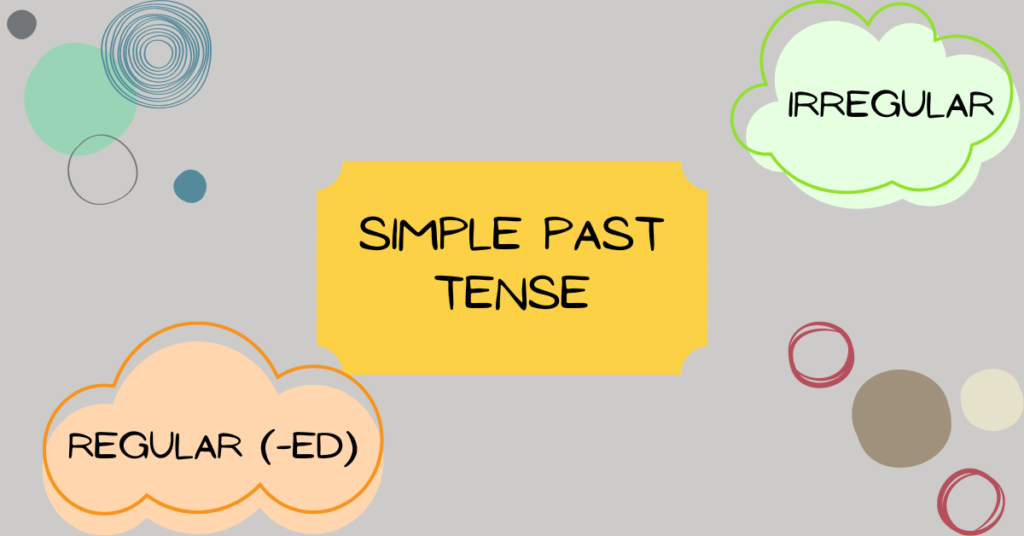
The simple past tense is used to describe actions or events that occurred and were completed in the past. It is often used to talk about specific past actions, habits, or states of being.
Example: “He finished his work yesterday.”
Explanation: In this sentence, the verb “finished” is in the simple past tense. It describes an action that occurred and was completed in the past. The adverb “yesterday” specifies the time when the action took place.
In most cases, regular verbs form the simple past tense by adding “-ed” to the base form of the verb. However, irregular verbs have their own unique past tense forms.
- Past Actions or Events:
Examples:
- She studied for the exam last night.
- They went to the beach yesterday.
- He visited his grandparents last summer.
- She cooked a delicious meal for her family.
- They watched a movie at the theater yesterday.
- Come up with your own sentence.
- Completed Actions in a Sequence:
Examples:
- He woke up, got dressed, and left for work.
- She arrived at the party, greeted her friends, and danced all night.
- I woke up, had breakfast, and went to work.
- The team practiced, prepared, and won the championship.
- She opened the package, read the letter, and smiled.
- Come up with your own sentence.
- Past Habits or Routines:
Examples:
- I always walked to school when I was a child.
- They used to play tennis every weekend.
- He always played the piano after dinner.
- We walked our dog every evening.
- She visited her grandparents every summer.
- Come up with your own sentence.
- States of Being or Conditions in the Past:
Examples:
- He was happy when he received the news.
- The weather was sunny during our vacation.
- He was excited about his upcoming trip.
- The house was clean when they arrived.
- I was tired after a long day at work.
- Come up with your own sentence.
The simple past tense helps to describe actions, events, habits, or states of being that occurred and were completed in the past. By using this tense, we can convey information about past actions or situations with a clear temporal reference.